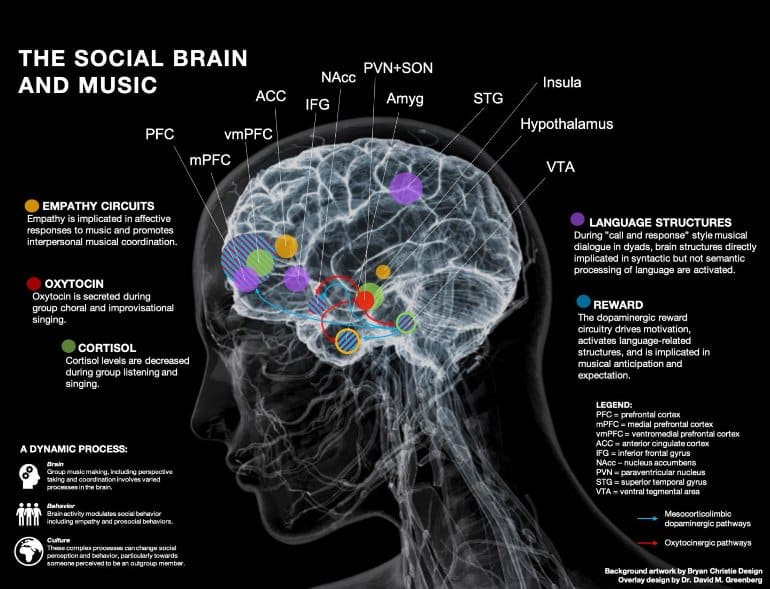NeuroScience News:June 10, 2021
What Happens to the Brain when people Make Music Together?
Summary: A new study reveals what goes on in the brain when a person embarks on a musical collaboration project.
Source: Bar-Ilan University
Music is a tool that has accompanied our evolutionary journey and provided a sense of comfort and social connection for millennia. New research published today in the American Psychologist provides a neuroscientific understanding of the social connection with a new map of the brain when playing music.
A team of social neuroscientists from Bar-Ilan University and the University of Chicago introduced a model of the brain that sheds light on the social functions and brain mechanisms that underlie the musical adaptations used for human connection. The model is unique because it focuses on what happens in the brain when people make music together, rather than when they listen to music individually.
The research was inspired by creative efforts of people around the world to reproduce music-making together while social distancing during the COVID-19 pandemic. This included people singing songs in unison from balcony to balcony, group singing on video conferencing platforms such as Zoom, and live living room concerts by the likes of Yo Yo Ma, Chris Martin from Coldplay, and Norah Jones.
The team fused the latest advances in social neuroscience and the field of music, including evolutionary theory. They synthesized these advances and highlighted five key functions and mechanisms of the brain that contribute to social connection through music.
These are (1) empathy circuits, (2) oxytocin secretion, (3) reward and motivation, including dopamine release, (4) language structures, and (5) cortisol.
Empathy helps us to tune into how other people are thinking and feeling, and can be improved through interpersonal musical coordination.
Oxytocin is sometimes called the "love hormone" because it contributes to our sense of feeling socially bonded with others. It is secreted when people sing together, even when the singing is improvised.
Dopamine is a neurotransmitter that produces a sense of pleasure and is released during musical anticipation and expectation, and pivotal for our sense of reward and motivation.
Language structures in the brain are involved in back-and-forth musical dialogue (sometimes referred to as "call" and "response").
Cortisol is a hormone that contributes to stress, but it is decreased in the brain when people sing together and when they listen to music together in groups.
The research provides the groundwork for an emerging field called the "social neuroscience of music", which builds on the previously established cognitive neuroscience of music, which largely focuses on music listening.

